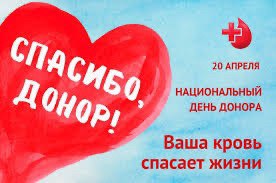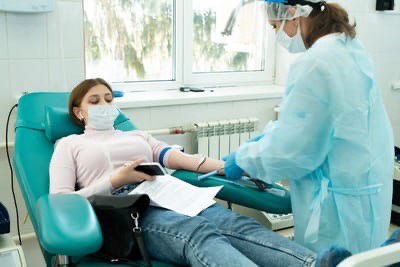
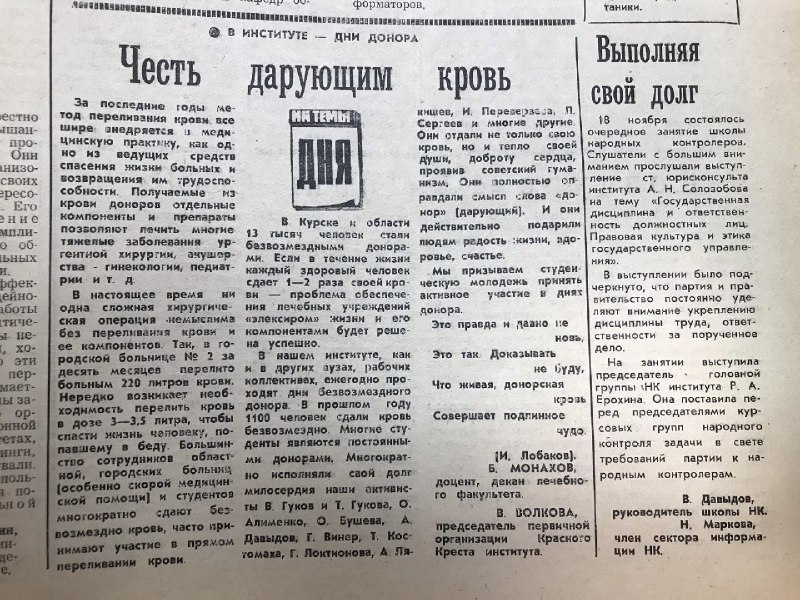
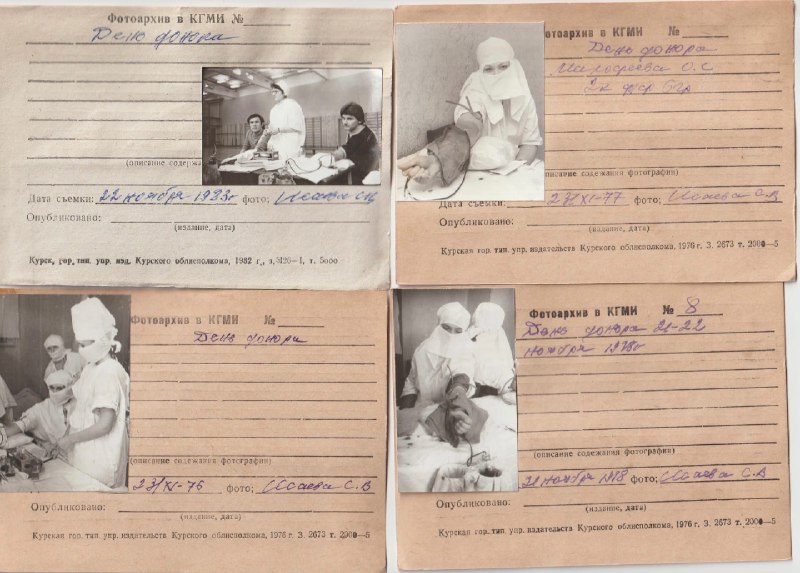
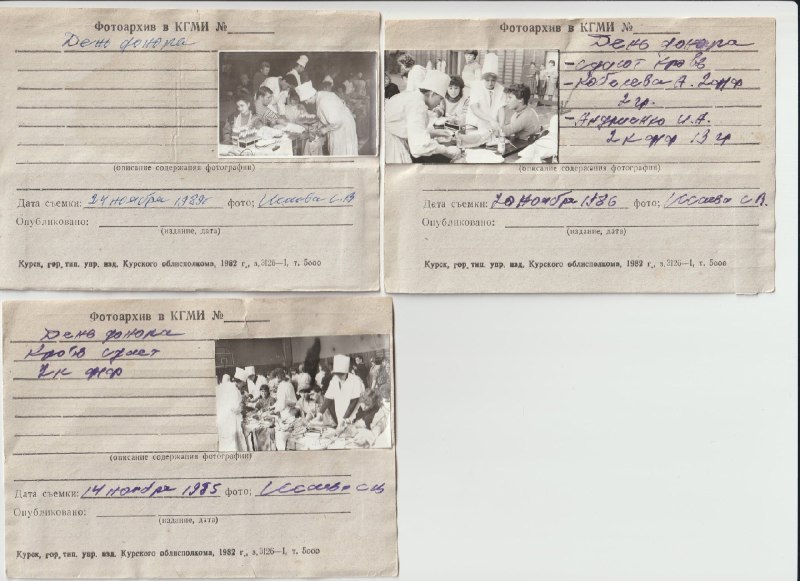
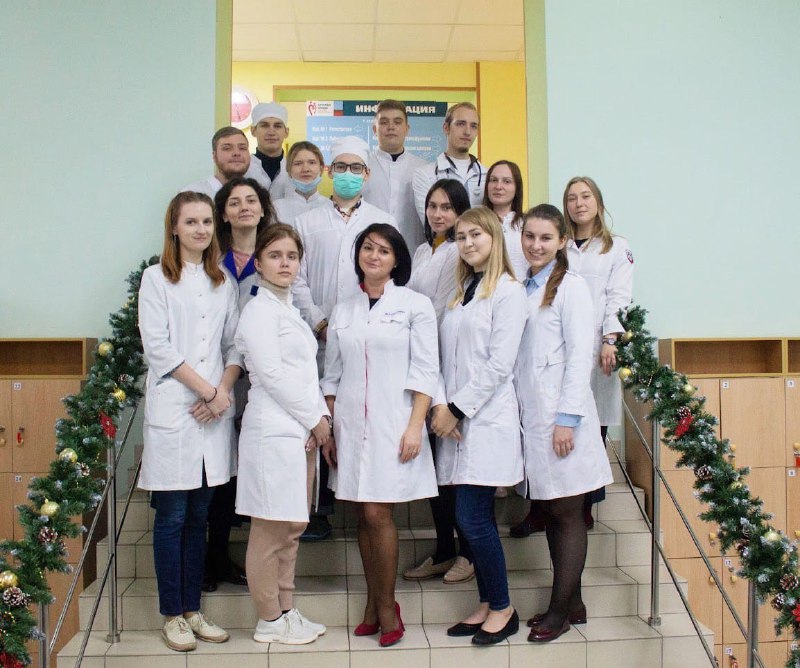
There is nothing more valuable than human health and very often it depends on an unfamiliar person whether there will be a continuation of life or not. Organ transplantation or blood transfusion is something that saves many people’s lives. People who help in such moments to save a human life are called donors. It is to those who give a chance not to die and continue to breathe and love that the holiday is dedicated – the National Donor Day of Russia, which is celebrated on April 20.
In Russia, the first blood transfusion was carried out in 1832 in St. Petersburg. During childbirth, a woman was diying from severe bleeding and the obstetrician, Andrei Wolf, decided to carry out a blood transfusion. The husband of the woman acted as a donor. The transfusion was successful. The woman lived for many years.
Today, blood transfusion is a standard procedure that is resorted to in difficult situations during operations or when receiving high-grade injuries (burns, anemia, etc.). Usually relatives become donors, and if for some reason this is not possible, then donor blood from other people comes to the rescue.
Each year the number of donors decreases, and those in need of donated blood increases. Therefore, at a meeting in the State Duma of the Russian Federation on February 20, 2007, where the topic of donation was discussed, it was proposed to approve April 20 as the National Day of Donation of Russia.
In 1628, the English scientist W. Harvey was the first to tell the way the blood moves through the human body, which allowed us to think about the method of its transfusion. The first successful blood transfusion experiment took place in 1667. French scientist Denis performed a blood transfusion from a lamb to a human. A simple worker from a poor quarter of Paris agreed to participate in the experiment for a fee. He was transfused with the blood of a lamb, and he gave his blood to another person, and became the first donor in the world. The doctor’s subsequent experiments were a failure and blood tests were suspended for a century.
In 1818, there was a new blow in research, which made it possible to carry out blood transfusion from person to person. Obstetrician James Blundelli performed this procedure for his patient using a special blood transfusion device.
After this incident, blood tests were resumed. In 1901, the Austrian physician K. Landsteiner discovered the concept of blood groups and as a result, the causes of all failures and complications were cleared. In addition, he put forward the theory that transfusions of the same blood type do not lead to complications. For this discovery, the Austrian doctor was awarded the Nobel Prize in 1930.
It is worth noting that the practice of blood transfusion began with military hospitals and the first experiments were at their premises. At that time, there were not enough donors, so doctors became donors themselves for their patients in order to alleviate the suffering of sick people.
On March 1, 1926, the first Institute of Blood transfusion (currently the Hematology Research Center of the Russian Academy of Medical Sciences) was opened in Moscow. In the following years, such institutes were opened all over the USSR. They partially solved the problem of donation.
In 1927, they began to give financial remuneration for donation, and in 1930 – special rations.
By 1938, a whole donation system had been created. A large number of institutes and stations for blood transfusion were opened, instructions and methodological recommendations for work were developed, special equipment was purchased, and the Ministry of Health of the USSR took control of the activities of such institutions.
The technique of blood transfusion was widely used during the Soviet-Finnish War and at the period of the Second World War. During the war years, more than 5 million donors were registered, hospitals received over 1.5 million liters of canned blood, 7 million blood transfusions were carried out. After the war, a lot of experience was accumulated in the field of blood transfusion and this experience became the basis for the development of new techniques.
In Kursk, at the beginning of 1935, a branch of the Research Institute of Blood Transfusion was organized at the premises of the regional hospital on the initiative of the head of the surgical department M.N. Rozanov. Until that time, blood transfusion, as a therapeutic method, was used by city medical institutions only as an exception.
According to WHO, more than 118 million blood donations are collected annually in the world. Russia ranks among the first in the world in terms of the number of honorary donors, that is, those who have made more than 40 blood donations or more than 60 plasma donations.
The first mention of donation in KSMU reflects a note in the newspaper “Medik”. The history of donation in our university presumably dates back to 1959. In that issue, third-year students reported joining the ranks of donors and urged all students of the institute to follow their example. This movement was organized directly at the premises of the Red Cross Society, which arose at the beginning of the second half of the 20th century. The first committee consisted of A.N. Polevaya, L.A. Severyanova, V.V. Volkova, A.E. Yaprantseva, V.P. Churilova.
The movement, besides the active participation in blood donation, carried out work inside the university, community staff gave lectures on prevention, on the rules of sanitation and hygiene, held meetings, organized incentive awards for students donating blood. Every year the community grew and already in 1966 the number of the Red Cross Society increased by 400 people. The ranks of donors who donate blood for free have also significantly expanded: from 150 people in 1963, to 300 in the reporting year of 1965. Many of the participants of the movement were subsequently awarded a separate award “Donor of the USSR”.
In 1981, there were about 13 thousand people in Kursk and the region who became blood donors. Our university was still leading in the number of students taking part in blood donation, and the Red Cross community continued its active activities. Already in 1982, 957 students of medical and pharmaceutical faculties joined the ranks of gratuitous blood donors.
The teaching staff of KSMU took an active part in the activities of the Red Cross Society. At that time, donor Day was necessarily held twice a year, in spring and in autumn. It was an important, landmark event for the university. The whole university was preparing for it strenuously. The donation was only gratuitous. It was very honorable to donate blood, almost 2/3 of students in groups weretaken off from classes. In total, about 1.5-2 thousand students of medical and pharmaceutical faculties took part in this event. The donor Day was held for several days and 200 grams of blood were taken instead of 400, which reduced health concerns and increased the desire to donate blood among students.
One of the leaders of the Donor Day at the university was Candidate of Medical Sciences, associate professor, head of the Department of Nursing Alexey Sergeevich Kulabukhov, a couple of years the head of donation was Candidate of Medical Sciences, associate professor of the Department of Propaedeutics of Internal Diseases Svetlana Shkolnikova.
From 1999 to 2007, this direction was headed by Alexander A. Lukashov, Candidate of Medical Sciences, Associate Professor of the Department of Internal Diseases No. 1.
So, it is safe to say that the history of donation of KSMU is very extensive and multifaceted. For more than 50 years, our university has been participating in the organization of the “Donor Day” and the promotion of donation among the young population. And this, more than ever, is relevant. Blood-related diseases are becoming more and more common in our society. Thanks to such events, there are more and more people who would like to become donors.
Nowadays, there are much more people who need blood transfusions than donors who are willing to donate their blood to a sick person. Today, there are 12-14 donors per 1,000 people in need of blood transfusion, when 40 donors are needed. Therefore, every doctor encourages people to donate blood to save at least one more life.
It is important to note that donation has always been and will be one of the most pressing topics of today and therefore we need not stop there.
Associate Professor of the Department of Internal Diseases No. 2, Candidate of Medical Sciences, Associate Professor Yu.A. Zhilyaeva.

